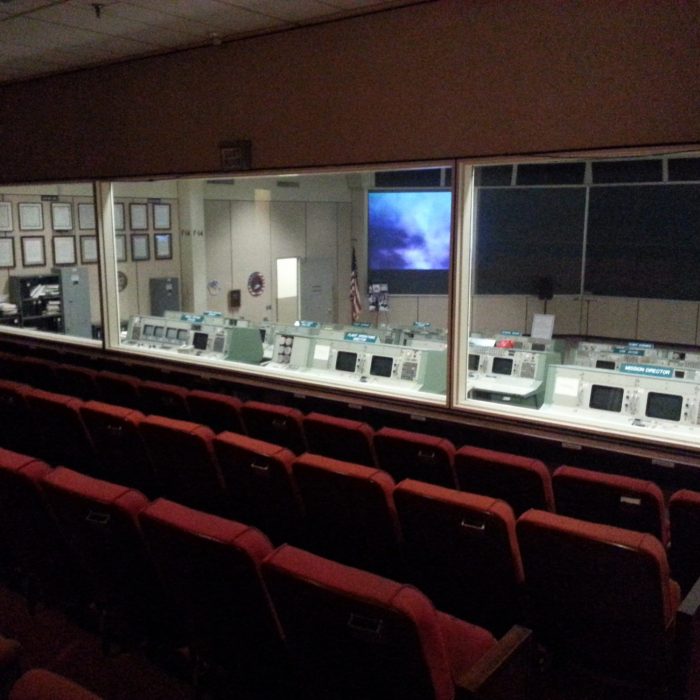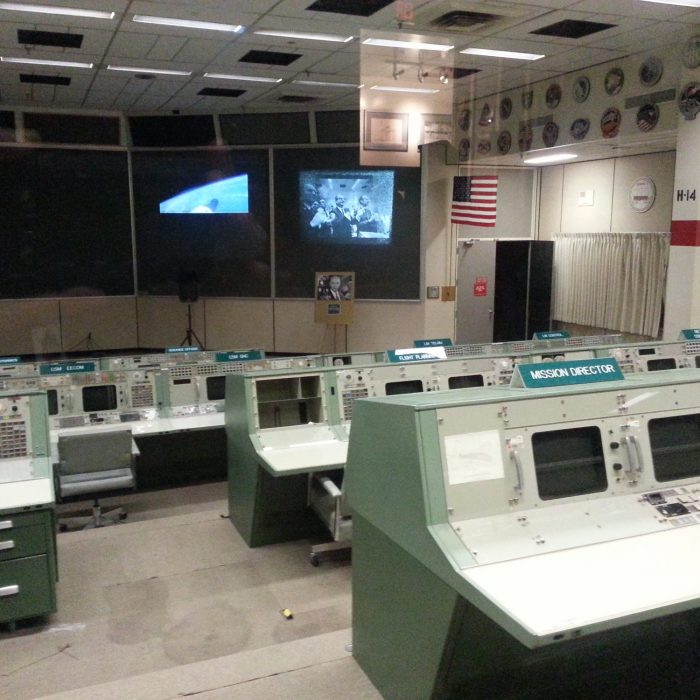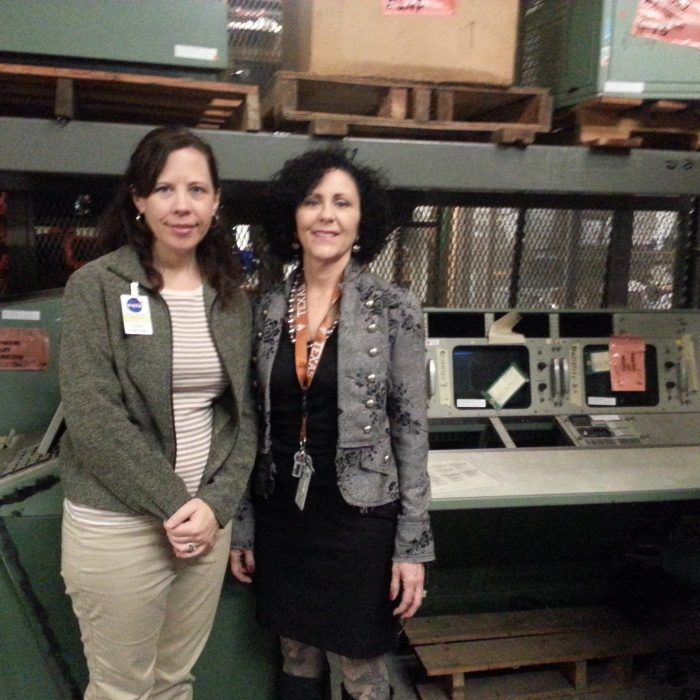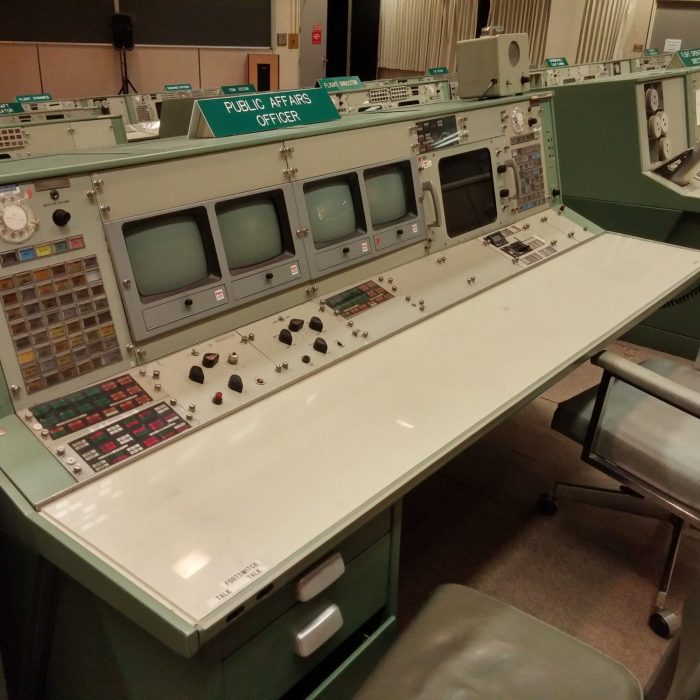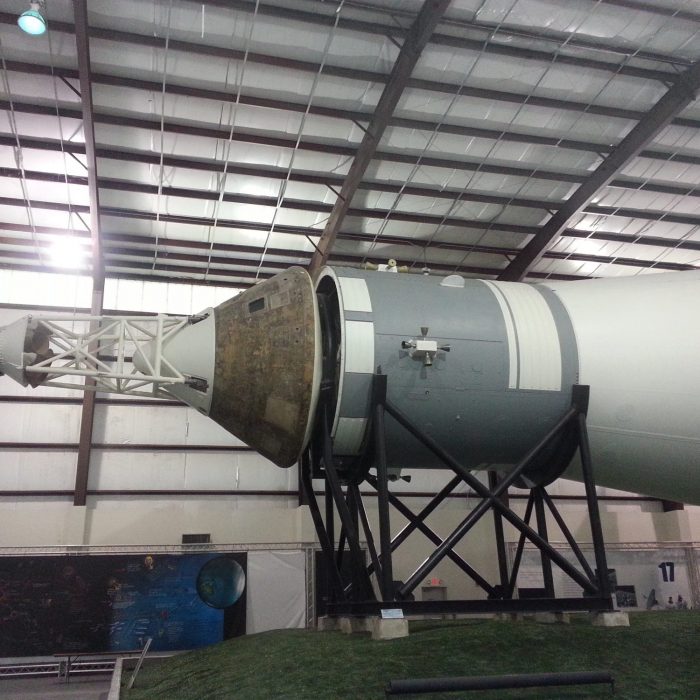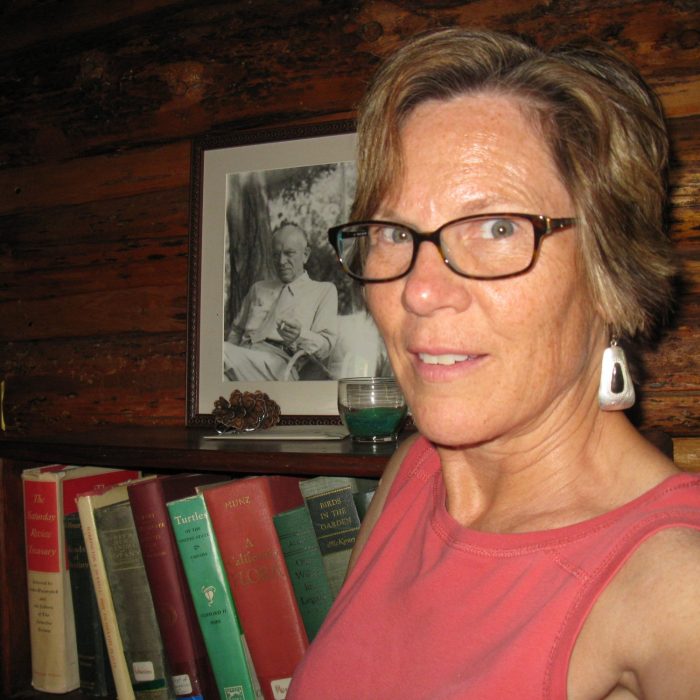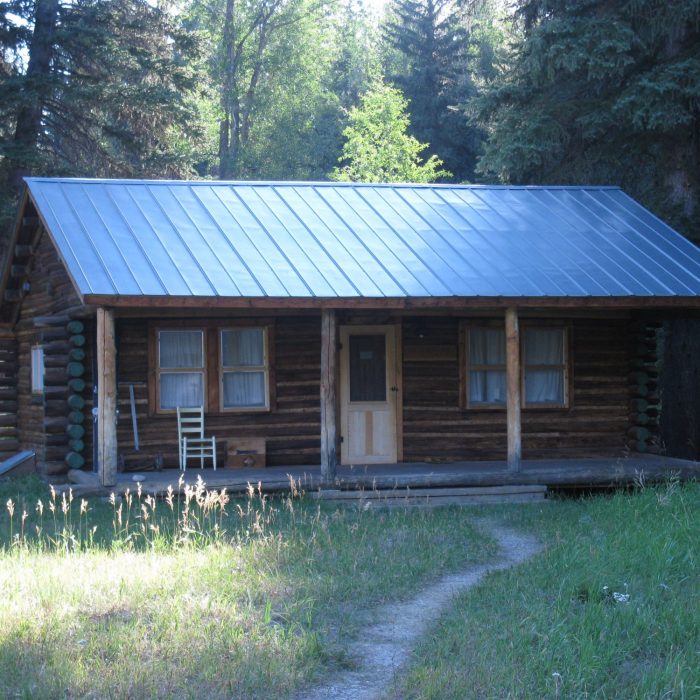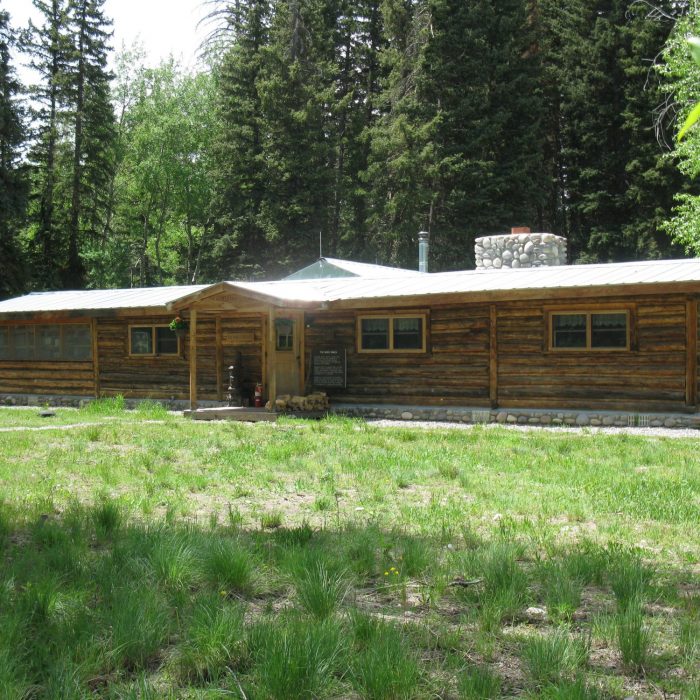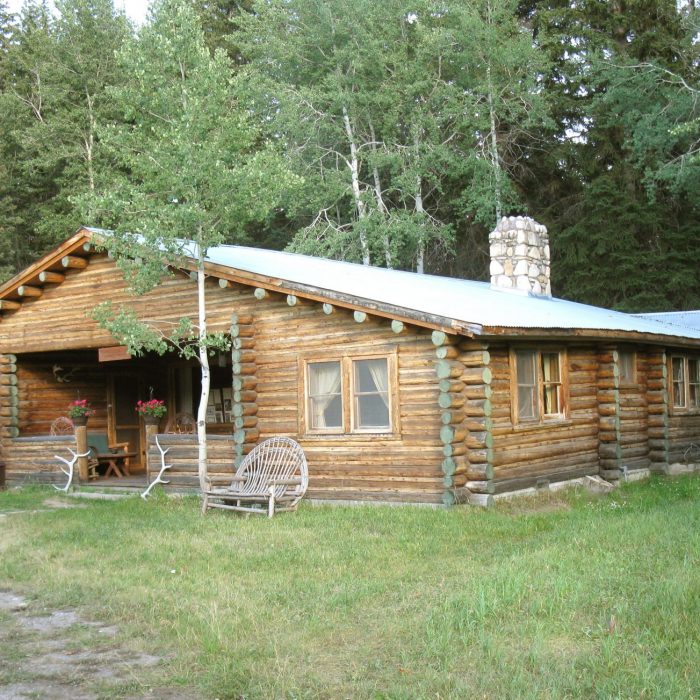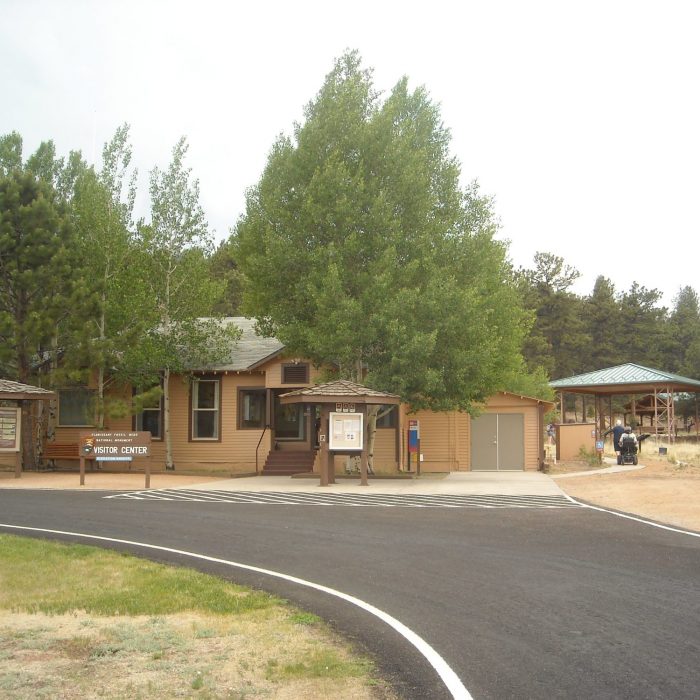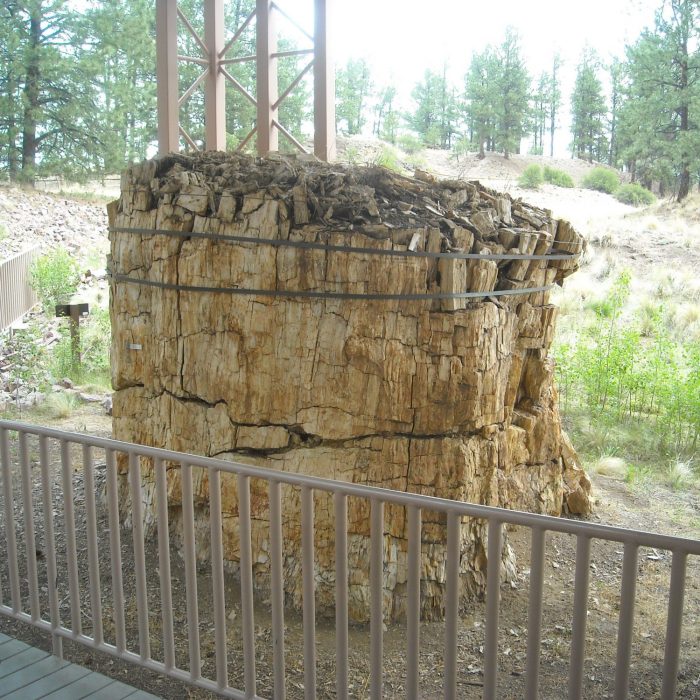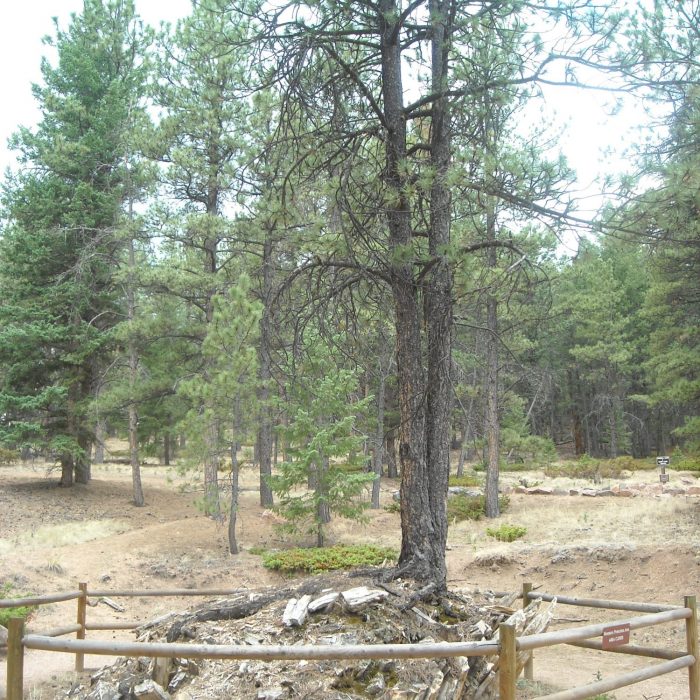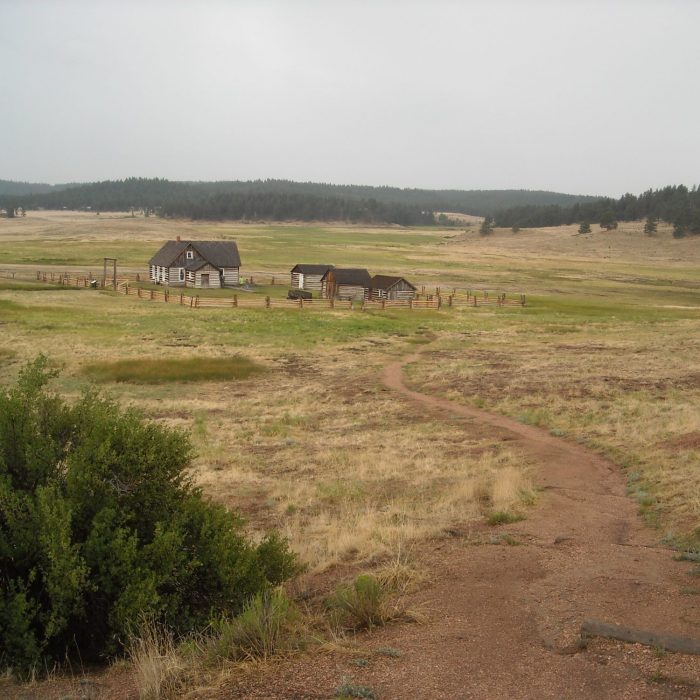Past PEHC Projects
Administrative Histories and Management Documents
Biographical History of Ben Preston, World War II Fighter Pilot
Partner & Funder: Private PLHC Donor
Researchers: John Kochanczyk, Jason O’Brien
Timeline: 2013-2014
This project undertook research into the life and military career of Captain Benjamin Gifford Preston, a Fort Collins native and one of Colorado’s most decorated Navy veterans. The research culminated in a synthetic essay of Preston’s life, from his early years in Colorado, his career military service, and his retirement years spent as a member of the Fort Collins community.
Fort Collins Utilities Water Department History
Partner & Funder: City of Fort Collins Utilities Water Department
Project Principal Investigator: Dr. Mark Fiege
Researchers: Christy Dickinson, Maren Bzdek, Nichelle Frank
Timeline: 2012-2014
The goal of this project was to produce an update and expansion of the Fort Collins Utilities Water Department history compiled in the 1980s. The PLHC produced a new history that expanded upon the existing report in chronology, scope, context, and length, providing additional detail and historic context for the period 1882-1982 covered in the initial report and bringing the history up to the present with new information about the thirty-year period from 1982 to 2012. The addition of a chronology appendix including major highlights from the narrative serves as a quick reference guide for readers. The report presents the local history of Fort Collins municipal water management within the larger framework of the history of environmental services in urban America and the arid West. The research team also compiled a finding aid of historic photos at Fort Collins Utilities so that the photos could be included in a local photographic exhibit.
Researcher Christy Dickinson at the 1883 Fort Collins Water Works.
Administrative History of Great Sand Dunes National Park
Partner & Funder: Great Sand Dunes National Park
Project Principal Investigator: Dr. Mark Fiege
Researcher: Michael Geary
Timeline: 2008-2012
Great Sand Dunes National Park and Preserve was established in 2004, and encompasses a wide variety of natural and cultural features, including sand dunes, wetlands, forests, grasslands, mountain summits, and archaeological sites. However, it lacked a complete history to use to educate the public, park personnel, and policymakers about the significance and potential of the park. In 1997, Michael Geary wrote his master’s thesis on Great Sand Dunes, which at the time was a national monument and not as large as it is now. This project was undertaken by Geary to expand upon his manuscript and turn it into a complete, publishable administrative history of the park.
Project Publication: Sea of Sand: A History of Great Sand Dunes National Park and Preserve by Michael M. Geary (Norman: University of Oklahoma Press, 2016).
National Park Service Grazing Management History
Partner & Funder: National Park Service
Project Principal Investigator: Dr. Mark Fiege
Researchers: Kelsey Matson, Nelly Pierson, Avana Andrade, Maren Bzdek, Dr. Mark Fiege
Timeline: 2008-2012
More than 100 of the national parks within the National Park service have grazing, whether NPS grazing or permitted livestock use. Some grazing pre-existed the formation of parks, while other grazing activities are part of the living history experience, used for vegetative control on a temporary basis, or are used to graze animals used by NPS staff. Despite the widespread use of grazing, there was no overall administrative history of grazing within the national parks system, and grazing has instead been studied on a park-by-park basis. This project emerged to provide an administrative history of grazing in the park system as a whole, provide an understanding of the historical development of grazing, and to serve as a foundation for resource management decisions.
Environmental History of Little Bighorn Battlefield National Monument
Partner: Little Bighorn Battlefield National Monument
Project Principal Investigators: Dr. Mark Fiege, Dr. Greg Smoak (Associate Professor of History at the University of Utah and Director of the American West Center)
Researcher: Jim Bertolini
Timeline: 2010-2012
This environmental history of Little Bighorn Battlefield National Monument provides park managers with a comprehensive reference and treatment-planning tool for restoring the battlefield’s natural landscape back as close as possible to its original 1876 appearance, and increase public awareness, understanding, and appreciation of the historic natural landscape. The final product provides a broad environmental overview, reconstruction of the 1876 landscape, impacts on the landscape, vegetation, and an integration of tribal input and values.
Environmental History of Kawuneeche Valley
Partner: Rocky Mountain National Park
Project Principal Investigators: Dr. Mark Fiege, Dr. Thomas Andrews (Associate Professor of History, University of Colorado-Boulder)
Researcher: Brandon Luedtke
Timeline: 2009-2011
Rocky Mountain National Park’s Kawuneeche Valley, headwaters of the Colorado River, has seen dramatic changes over time, including building of the Grand Ditch, ranching activities, tourist surges, and beetle-killed forests. Recently, park staff have noticed serious changes in wildlife, vegetation, and water resources. The park identified the health and history of the valley as one of the three top resource priorities for the park as there are concerns that the valley may be at an ecological tipping point due to past and current changes. Consequently, this project aimed to provide the background and research needed to address the management decisions needed for the valley. This environmental history provided a comprehensive report documenting landscape changes over time, and especially how humans have influenced and then been influenced by the landscape. It covers the broadest period possible (prehistoric and historic conditions) and includes all lands in the Colorado River headwaters drainage from the Continental Divide to Middle Park. The report addresses the topics of Native American land use, hydrology and water use, human settlement, disturbance history (fire, beetles, climate change, etc.), wildlife, tourism, and park administration. Understanding the context of these changes over time will contribute to the establishment of reference conditions and assist park managers as they attempt to restore and preserve this valley’s natural and cultural resources. By understanding the historic context of these changes, managers can make better decisions about how to manage them in the future.
Project Publication: Coyote Valley: Deep History in the High Rockies by Thomas G. Andrews (Cambridge: Harvard University Press, 2015).
Environmental History of Pecos National Historical Park
Partner: Pecos National Historical Park
Project Principal Investigator: Dr. Mark Fiege
Researchers: Cori Knudten, Maren Bzdek
Timeline: 2008-2011
This project addressed the need of Pecos National Historical Park for an environmental history in order to identify significant historic changes to the environment from the contact period to the present. The report provides and overview to the environmental and landscape conditions at the upper Pecos River drainage at the present park site from the time of contact to the present. This document serves as a foundation for management decisions that will guide the long-term development of the national historic park and help the park manage current conditions and manage resources in the context of significant changes in land use.
Press Documents:
— Project Summary, Pecos NHP Environmental History.
— Project Spotlight, “Natural and Cultural Crossroads: An Environmental History of Pecos National Historical Park”, Colorado Plateau Cooperative Ecosystem Studies Unit.
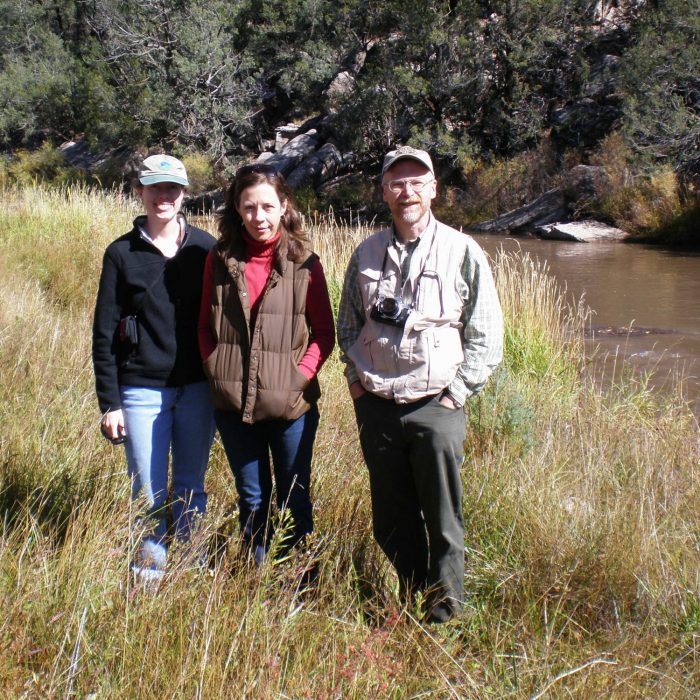
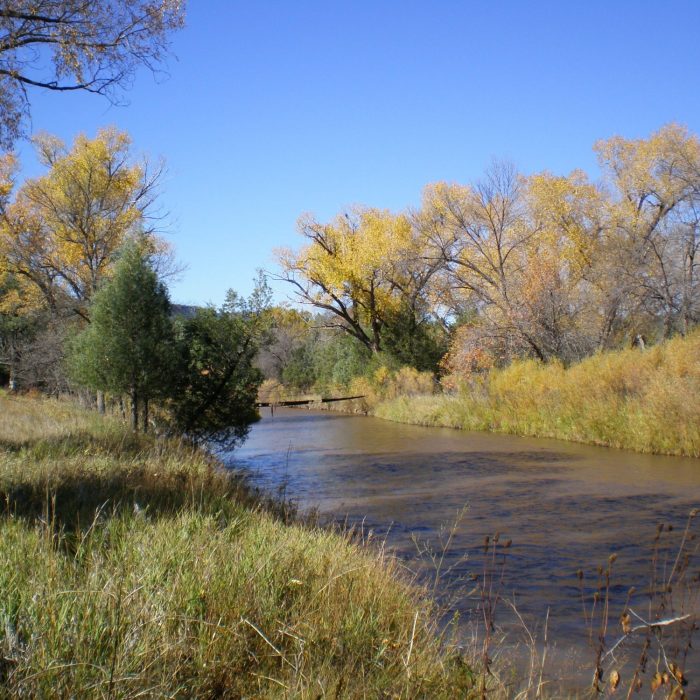
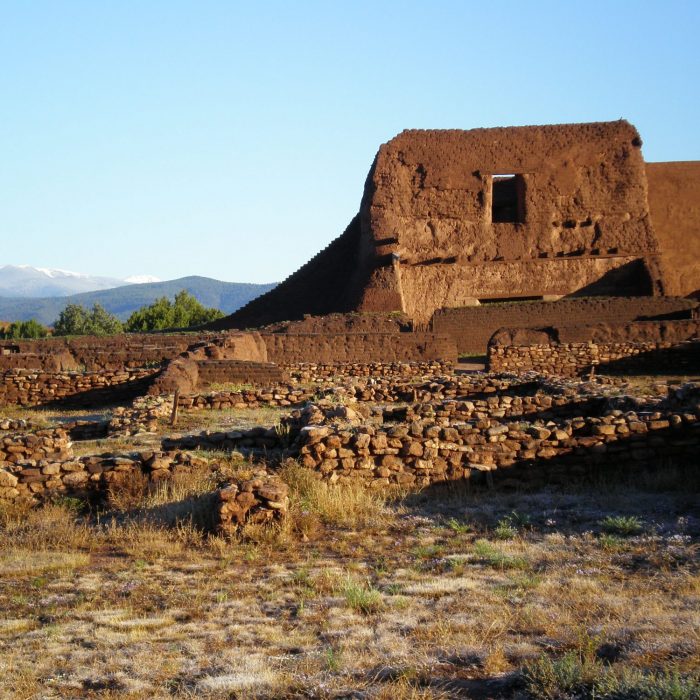
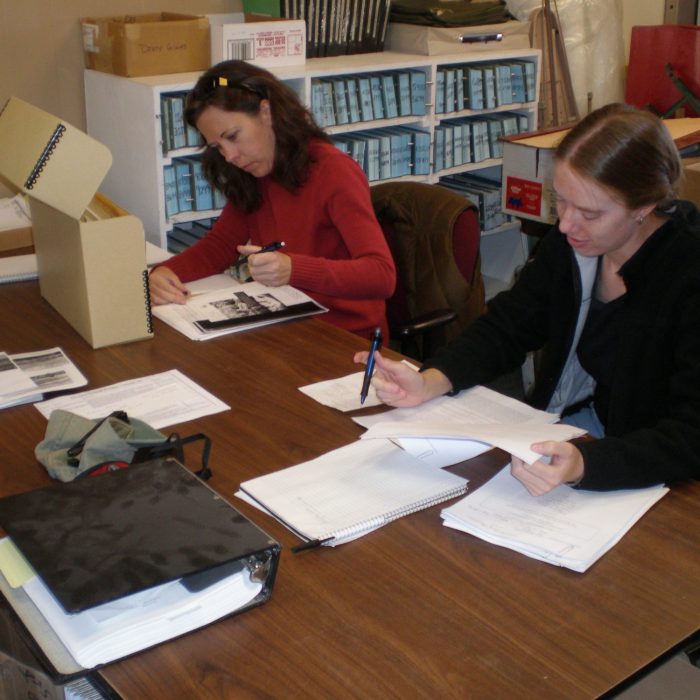
Longs Peak Resource and Impact Study
Partner & Funder: Rocky Mountain National Park
Project Principal Investigator: Dr. Ruth Alexander
Researchers: Catherine Moore, Josh Weinberg, Leslie McCutchen
Timeline: 2008-2010
This study investigated the history of hiking, mountaineering, and technical climbing on Longs Peak since 1925 and the impact of these forms of recreation over time on the peak’s natural and cultural resources. It also analyzed the changes in social identity, cultural values, and environmental perceptions of people who have hiked or climbed Longs Peak as well as changes over time in park management goals. The interdisciplinary approach of this project involved historical research, assessments of existing natural and cultural resource studies and inventories, and assessments of existing social science studies concerning human recreation in natural environments. Through reconnaissance-level field investigation with park staff, the project identified categories of un-inventoried resources (for example, social trails and approach and descent routes) and impacts to resources (for example, damage caused to geological resources from technical climbing litter, soil erosion, human waste) that ought to be inventoried or investigated in the future. This study of Longs Peak provides National Park Service managers with direction and documentation when developing land and resource management plans, interpreting the area, managing visitors, following compliance directives, protecting wilderness resources, and planning for future visitor use surveys and research. It maps resources and visitor impact areas. As recreational activities evolve and visitation to the peak increases, a comprehensive inventory of the peak’s resources and issues is critical to offering long-term protection of those resources as managers seek answers to complex questions about balancing use and preservation.
Press Document: “Colorado State Researcher Studies Impacts of Hiking and Mountaineering on Longs Peak” Colorado State University News Service, May 20, 2008.
Final Report: “People and Nature on the Mountaintop: A Resource and Impact Study of Longs Peak in Rocky Mountain National Park” by Ruth M. Alexander and Catherine Moore, 2010.
Environmental History of Sand Creek Massacre National Historic Site
Partner: Sand Creek Massacre National Historic Site
Project Principal Investigator: Dr. Mark Fiege
Researcher: Elizabeth Michell
Timeline: 2008-2009
This project converted the existing environmental history manuscript, completed in 2007 by Elizabeth Michell) of Sand Creek Massacre National Historic Site into a revised manuscript suitable for publication for a general audience. The revised manuscript provides visitors and others with a general introduction and overview of the historic and contemporary landscape at Sand Creek Massacre NHS, and addresses the role of environmental factors in the events of the massacre, provides an explanation for how the NPS is managing and interpreting the site in an ecological context that has changed over time, and helps readers understand how the human and natural combine to create landscapes.
Press Document: Project Summary, Sand Creek Massacre National Historic Site Environmental History.
Project Document: Sand Creek Massacre Site: An Environmental History (2007).
Lory Student Center Benchmark History Project
Partner: Colorado State University, Lory Student Center
Project Principal Investigator: Dr. Jared Orsi
Researcher: Jordan Cooper
Timeline: 2013-2014
This project resulted in photographic and manuscript research on Lory Student Center at Colorado State University. The first phase of the project led to a determination of the location of Colorado State University’s college farm and components in relation to the current Lory Student Center (LSC) building and grounds, and an identification of notable events, structures, or locations that could be used as a benchmark registered with the U.S. National Geodetic Survey. A report summarized the research findings and enabled staff to select a site for the benchmark. The second phase of the project was a detailed report on the history of the LSC, focusing on the role of Colorado State University reflecting and contributing through the LSC to a national story of the democratization of American higher education. The LSC as an institution, a building, and landscape site was treated as an expression of U.S. land grant colleges, historic and recent architectural and landscape design, veteran’s services, diversity and advocacy, globalization and other topics that make explicit CSU’s connection to democracy and higher education. The goal of the report was to provide content, conceptualization, and references that CSU could use in digital and/or hard copy formats to supplement the historical interpretation of the LSC.
Press Document: “A History of Higher Education in America: CSU and the Democratization of Education” by Jordan Cooper, ValueED: Education + Your Life, Colorado State University blog, July 3, 2014.
Thomas Stuart Homestead Historic Context Report
Partner: Grant-Kohrs Ranch National Historic Site
Project Principal Investigator: Dr. Janet Ore
Researcher: Avana Andrade
Timeline: 2011-2012
This project resulted in a historic context of a homestead site occupied by Thomas Stuart, and early resident of the Grant-Kohrs area. The report evaluated the significance of the homestead and tied it to the state and national significance of Grant-Kohrs Ranch, including the homestead’s development and use relative to Grant, Kohrs, Warren, and other persons significant to the ranch’s story. The context will be used to assist in making a determination of eligibility for the homestead’s inclusion in the National Register.
Resource Stewardship Strategies
Resource Stewardship Strategy
Partner: Pecos National Historical Park
Project Principal Investigator: Dr. Mark Fiege
Researchers: Cori Knudten, Maren Bzdek
Timeline: 2010-2011
This project resulted in preparation of a Resource Stewardship Strategy (RSS) for Pecos National Historic Park that recommends science- and scholarship-based comprehensive strategies to achieve and maintain desired conditions of the park’s natural and cultural resources. As a park program plan, the RSS serves as a linkage between the GMP and the park’s foundation plan. The expert-reviewed comprehensive strategies in the RSS will aid the park in guiding its resource stewardship investments over the next 15 to 20 years and serve to focus these investments on the achievement and maintenance of desired conditions. The comprehensive strategies in the RSS will provide continuity to allocation decisions concerning park base personnel and financial resources spanning multiple five-year strategic planning cycles, and advance and coordinate both nonrecurring project funding and recurring park-base increase needs necessary for resource stewardship.
Press Document: “CSU Researchers Assist Pecos National Historical Park with Stewardship Strategy” ISLEC Members in the News, Institute for Society, Landscape & Ecosystem Change, Colorado State University.
Final Report: Pecos National Historical Park Integrated Resources Stewardship Strategy.
Historic Preservation Projects
Amendment to Little Bighorn Battlefield National Monument Historic District National Register Nomination
Partner: Little Bighorn Battlefield National Monument
Project Principal Investigator: Dr. Janet Ore
Researcher: Jim Bertolini
Timeline: 2011-2012
This project served to revise and update existing National Register documentation for Little Bighorn Battlefield National Monument, incorporating new research and information on historic structures and cultural landscape resources. The amendment to the National Register nomination included a change in the Period of Significance, the addition of landscape elements and features, and the addition of Mission 66 contributing resources. It included completion of the List of Classified Structures documentation and analysis for Mission 66 structures, incorporation of existing Determination of Eligibility for the Visitor Center and Quonset Hut, incorporation of information on cultural landscape resources from the 2010 Cultural Landscape Inventory, incorporation of information on Mission 66 landscape/building resources from the Mission 66 DOE, and research and tribal consultation information applicable since the last National Register documentation.
Researcher Jim Bertolini in the national cemetery at Little Bighorn Battlefield National Monument. 2011 photo.
Historic Trails National Register Amendments
Partner: Zion National Park
Project Principal Investigators: Dr. Janet Ore, Dr. Greg Smoak (Associate Professor of History at the University of Utah and Director of the American West Center)
Researcher: Tyler Welch
Timeline: 2008-2010
This project consisted of an amendment to the existing Zion National Park Multiple Resource Area National Register of Historic Places nomination form and preparation of an archival research report on the historic hiking trails in the park. The project involved using existing detailed inventory information to prepare an amendment to the existing Multiple Resource Area nomination for four historic hiking trails—Grotto, Canyon Overlook, Hidden Canyon, and East Rim. The project also included research in the Zion archives to determine the history of construction, use, and maintenance for seven other historic hiking trails—Riverside Walk (Gateway to the Narrows), West Rim, Angels Landing, Emerald Pools, Weeping Rock, Sand Bench, and Watchman—and compile this research into a report.
Ninemile Smokejumper Training Site National Historic Landmark Nomination
Partner: Heritage Partnerships Program, Intermountain Region, National Park Service
Project Principal Investigator: Dr. Janet Ore
Researcher: Maren Bzdek
Timeline: 2007-2009
This project resulted in a National Historic Landmark nomination for the Smokejumper Training Site at the Ninemile Remount Depot, which is historically significant as the first training area for U.S. Forest Service smokejumpers. The site is located in the Lolo National Forest in Montana. The remount depot, which was listed on the National Register in 1980, was identified as a potential National Historic Landmark in the 2006 NPS draft of the “American Aviation Heritage” theme study. The National Historic Landmark nomination evaluated the depot for its national significance within the larger context of American aviation, as recommended by the American Aviation Heritage theme study.
Historic Furnishings Reports
Apollo Mission Control Historic Furnishings Report
Partner: Heritage Partnerships Program, Intermountain Region, National Park Service
Additional Partner: NASA Johnson Space Center
Project Principal Investigator: Dr. Janet Ore
Researcher: Maren Bzdek
Timeline: 2013-2015
This project resulted in preparation of a Historic Furnishings Report for the Apollo Mission Control Center and Viewing Room at the NASA Johnson Space Center. The report documents the historic appearance of two interior spaces, the Mission Control Center and the Viewing Room, including the historic spaces, objects, furniture, wall and floor coverings, furniture, light fixtures, window treatments, clothing, books, documentation used at the computer consoles, and accessory items used to represent the appearance of the area to the era of the Apollo Missions, beginning in December of 1968 until the last manned landing on the Moon in December of 1972. The report includes a management summary, administrative information, interpretive objectives, historical information, and a furnishings plan.
Final Report: Historic Furnishings Report and Visitor Experience Plan, Apollo Mission Control Center National Historic Landmark.
Historic Furnishings Report for Olaus and Mardy Murie Ranch
Partner: Grand Teton National Park
Project Principal Investigator: Dr. Janet Ore
Researcher: Diane Sanders
Timeline: 2012-2013
The Murie Ranch at Grand Teton National Park was the former home of the Murie family, leaders in the conservation movement. The home remains much as it did at the time of the Muries’ ownership and was designated as a National Historic Landmark in 2006. While the Murie family’s collection of papers, artwork, and photographs are being cataloged and archived, the building’s furniture has never been evaluated or documented. This project resulted in the creation of a historic furnishings report to document the current and historic appearance of the ranch building interiors and make recommendations for future use of the ranch interiors. The project focused on the Murie Residence, Studio, and Homestead Cabin, three of the twenty-one structures at the ranch. The project resulted in information about the ranch, analysis of its historic use, evidence of original furnishings and recommendations, including which pieces were historically significant and which should be prioritized for conservation treatment.
Final Report: Murie Ranch Historic Furnishings Report
Historic Structures Database
Partner: Rocky Mountain National Park
Project Principal Investigator: Dr. Janet Ore
Researchers: Tyler Welch, Josh Weinberg
Timeline: 2009-2010
This project resulted in the creation of an electronic database of historic structures within Rocky Mountain National Park. Whereas the park had used Five Year Plans for Historic Building Treatment, this database can be more frequently updated and remain more current. This database serves as a tool to accurately show priorities for evaluation, repair, maintenance, reuse, and interpretation. It serves as an electronic, updatable, and accessible planning and compliance tool that includes all historic districts, eligible or listed structures, trails, and roads. Park staff can keep the database updated, resulting in a current historic resources treatment plan to enable other planning and funding activities to be more accurate and annual reporting documents easier to compile.
HABS/HAER/HALS documentation
Perry Cabin Historic American Building Survey (HABS) documentation
Partner: Rocky Mountain National Park
Project Principal Investigator: Dr. Janet Ore
Researcher: Tyler Welch, Josh Weinberg
Timeline: 2009-2010
The Perry Cabin is believed to be the last remaining structure associated with Sprague’s Ranch, a cattle turned dude ranch within Rocky Mountain National Park. The cabin was built in 1921. After the ranch closed in 1957, the park began removing most of the associated resources. In 1994, the cabin was determined eligible for listing on the National Register of Historic Places for its rustic design. However, the building was deteriorating and the park was debating moving it to a new location. This project provided the documentation and background information for park consultation with the State Historic Preservation Office to make a decision about the long-term use and preservation of the buildings. The project performed Level II documentation of the cabin, with a historical narrative, drawings, and photographs of the building.
Perry Cabin in Rocky Mountain National Park. 2010 PLHC Photo.
Museum and Archive Projects
Provenance & Documentation Projects
Summary of Cultural Resource Collections at Offsite Repositories
Partner: Zion National Park
Project Principal Investigator: Dr. Janet Ore
Researcher: Clarissa Janssen Trapp
Timeline: 2011-2013
During early excavation projects at Zion National Park from the 1930s through the 1950s, many artifacts were removed from Zion for analysis or distributed to other federal and non-federal repositories. Many were never returned to the park. The park has identified thousands of possible artifacts as unaccounted for and in need of documentation and inventory. This project identified Zion cultural resource museum collections including artifacts, field notes, and photographs, currently being stored in offsite federal and non-federal repositories, created an inventory of the identified collections, and provided recommendations for future actions and mitigation. A survey of items held in offsite repositories determined the number and types of items and the storage conditions of the facility. A final report was produced for the park, citing the locations of all Zion archaeological material and associated records, and providing recommendations for continuing work. The information gathered will benefit future research of the Anasazi/Ancestral Pueblo people by identifying unknown site documentation and artifacts held in other collection facilities. Based on the project findings, the park staff will foster relationships with the institutions that hold cultural resource collections and evaluate the conditions of storage for Zion museum collections.
Oral History Projects
Forest Service Retirees Oral History Project
Partner: USDA Forest Service
Project Principal Investigator: Dr. Janet Ore
Interviewers: Mike Eckhoff (team lead; Ph.D. Forestry candidate), Janell Nelson Byczkowski Maren Bzdek, John Kochancyzk, Tessa Moening, Naomi Gerakios Mucci, Diane Sanders
Transcribers: Janell Nelson Byczkowski, James Kelley, Mitchell Schaefer
Timeline: 2012-2015
This project began with an oral history training workshop for students at Colorado State University to equip them to conduct an oral history collection project coinciding with the USDA Forest Service’s five-day “Rendezvous in the Rockies,” a gathering of agency professionals and retirees in September 2012 in Vail, Colorado. The research team conducted thirty-six interviews with Forest Service professionals and retirees during the rendezvous. As part of a second phase of the project, researchers completed full transcriptions of the audio recordings collected in 2012. These oral histories help preserve the stories of the experiences of USDA Forest Service employees for Forest Service staff and researchers.
Partner: Florissant Fossil Beds National Monument
Project Principal Investigator: Dr. Ruth Alexander
Researcher: Nichelle Frank (lead researcher), Tessa Moening
Timeline: 2011
Florissant Fossil Beds National Monument had a limited number of oral history records—none of which were the result of an organized, professional project. There was a critical need to inventory, organize, digitize, and curate these existing recordings, documents, and other records. Additionally, there were gaps of information regarding the history and land use of the monument. This project prioritized interviewing key individuals who possessed information that could fill the gaps in the history of the monument. Many of these individuals were instrumental in the protection and founding of Florissant Fossil Beds National Monument. In addition, the project resulted in transcription of new and existing oral histories, and detailed list of all oral histories. A final report summarized the findings related to the oral histories and an annotated list of recordings and transcriptions.
Press Document: Rocky Mountain CESU FY2012 Annual Report – CESU Student Research Awards on page 12.
Oral History of Farmers Reservoir and Irrigation Company
Partner: Farmer’s Reservoir and Irrigation Company
Project Principal Investigator: Dr. Mark Fiege
Researcher: Clarissa Janssen Trapp
Timeline: 2010-2011
The purpose of this project was to develop an archival collection of oral history interviews with former and current board members, employees, and associates of the Farmers Reservoir and Irrigation Company (FRICO). The product was thirteen oral history interviews, with transcription of the audio files. This project formed the basis for a subsequent narrative administrative history of FRICO.
Public Outreach Projects
Lory Student Center Benchmark History Project
Partner: Colorado State University, Lory Student Center
Project Principal Investigator: Dr. Jared Orsi
Researcher: Jordan Cooper
Timeline: 2013-2014
This project resulted in photographic and manuscript research on Lory Student Center at Colorado State University. The first phase of the project led to a determination of the location of Colorado State University’s college farm and components in relation to the current Lory Student Center (LSC) building and grounds, and an identification of notable events, structures, or locations that could be used as a benchmark registered with the U.S. National Geodetic Survey. A report summarized the research findings and enabled staff to select a site for the benchmark. The second phase of the project was a detailed report on the history of the LSC, focusing on the role of Colorado State University reflecting and contributing through the LSC to a national story of the democratization of American higher education. The LSC as an institution, a building, and landscape site was treated as an expression of U.S. land grant colleges, historic and recent architectural and landscape design, veteran’s services, diversity and advocacy, globalization and other topics that make explicit CSU’s connection to democracy and higher education. The goal of the report was to provide content, conceptualization, and references that CSU could use in digital and/or hard copy formats to supplement the historical interpretation of the LSC.
Press Document: “A History of Higher Education in America: CSU and the Democratization of Education” by Jordan Cooper, ValueED: Education + Your Life, Colorado State University blog, July 3, 2014.
Cache La Poudre History Website
Partner: Colorado Agricultural Experiment Station
Project Principal Investigator: Dr. Mark Fiege
Researchers: Maren Bzdek (2011-2014), Clarissa Trapp (2012-2014), Blake Stewart (2012-2014), Hannah Braun (2012), Ashley Baranyk (2011)
2014 Class Project Researchers: Paul Higashi, Krista Maroudas, Tessa Moening, Naomi Gerakios Mucci, Jason O’Brien, Jacquelyn Stiverson, Katie Updyke, Jaci Wells
Timeline: 2011-2014
This project produced an educational website describing the history of water use on the Cache la Poudre River with an emphasis on the shift of water from rural-agricultural to urban and industrial uses. The website uses narrative, photographs, maps, and informational graphics to examine 150 years of cooperation and competition for water between agricultural, municipal, and recreational users in the Fort Collins area.
Project Website: http://publiclands.colostate.edu/digital_projects/dp/poudre-river/
Press Document: “How Did Fort Collins Address Water for Growth in the 20th Century?” by Maren Bzdek, Colorado Water, January/February 2015, pages 16-17.
WATER HISTORY PROJECTS
Oral History of Farmers Reservoir and Irrigation Company
Partner: Farmer’s Reservoir and Irrigation Company
Project Principal Investigator: Dr. Mark Fiege
Researcher: Clarissa Janssen Trapp
Timeline: 2010-2011
The purpose of this project was to develop an archival collection of oral history interviews with former and current board members, employees, and associates of the Farmers Reservoir and Irrigation Company (FRICO). The product was thirteen oral history interviews, with transcription of the audio files. This project formed the basis for a subsequent narrative administrative history of FRICO.
Fort Collins Utilities Water Department History
Partner: City of Fort Collins Utilities Water Department
Project Principal Investigator: Dr. Mark Fiege
Researchers: Christy Dickinson, Maren Bzdek, Nichelle Frank
Timeline: 2012-2014
The goal of this project was to produce an update and expansion of the Fort Collins Utilities Water Department history compiled in the 1980s. The PLHC produced a new history that expanded upon the existing report in chronology, scope, context, and length, providing additional detail and historic context for the period 1882-1982 covered in the initial report and bringing the history up to the present with new information about the thirty-year period from 1982 to 2012. The addition of a chronology appendix including major highlights from the narrative serves as a quick reference guide for readers. The report presents the local history of Fort Collins municipal water management within the larger framework of the history of environmental services in urban America and the arid West. The research team also compiled a finding aid of historic photos at Fort Collins Utilities so that the photos could be included in a local photographic exhibit.
Researcher Christy Dickinson at the 1883 Fort Collins Water Works.

